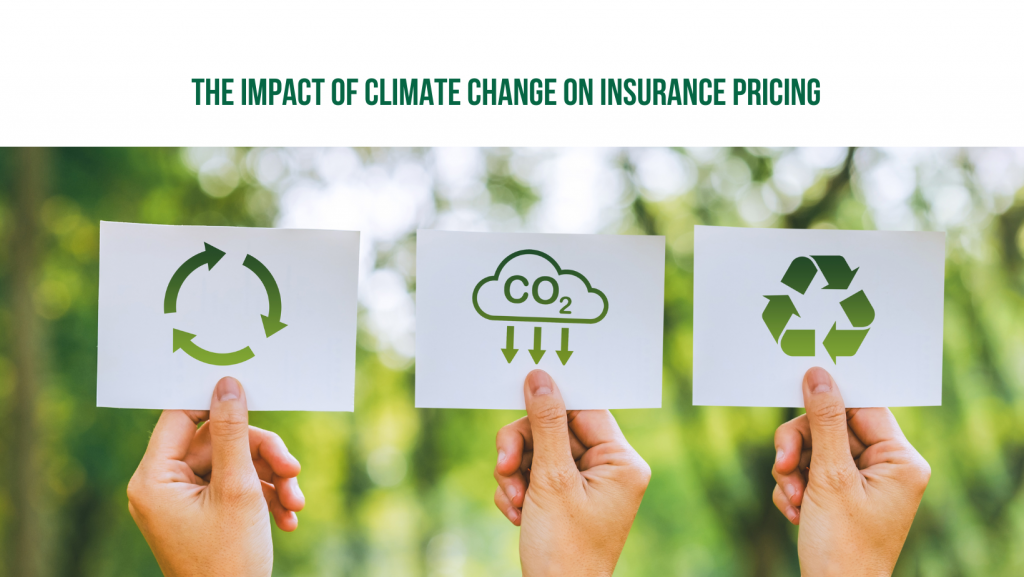The Impact of Climate Change on Insurance Pricing
The Impact of Climate Change on Insurance Pricing

Did you know that climate change costs the US about $150 billion a year? As heat waves, heavy rains, droughts, hurricanes, floods, and wildfires grow more severe and unpredictable, they may start hurting your wallet. In fact, today, the US experiences a billion-dollar disaster every three weeks—while in the 1980s, these occurred once every four months.
This isn’t just an issue affecting states that are used to experiencing severe hurricanes or wildfires. Increased unpredictability increases risk everywhere. As 2023 is set to be the hottest year on record, many of us experienced much warmer summers than usual, which affected everything from our electricity bills to our health.
A state you might not expect to have experienced serious costs is South Dakota, which in the past 20 years was among the top states receiving insurance payouts for crop losses due to extreme weather. Additionally, Vermont, which is not typically a hurricane-prone state, experienced extreme flooding this summer, which caused costly property damage.
Across the country, extreme weather events are causing costs in a number of different ways, including evacuation, employment, healthcare, food prices, property damage, agricultural loss, workplace injuries, and falling real estate value—just to name a few. So, how might these extra costs affect your insurance rates?
How Climate Change Impacts Homeowner’s Insurance
Between 2021 and 2022, 90% of homeowners experienced an increase in their home insurance premiums, and climate change effects may be one of the reasons to blame.
While flooding, hurricanes, and wildfires increase in frequency and severity, people are moving to the areas that experience them the most.
A recent EPA study found that coastal regions of the US are experiencing more frequent floods, and the rate of increase is accelerating, particularly in locations along the East Coast. Despite this, more and more people have been moving to these areas of highest flood risk. On the East Coast, more properties are being built in the areas at a higher risk of flooding.
Developers also continue to build more homes in areas with increased wildfire risk. From 1990 to 2010, the number of homes in these high-risk areas increased by 46%. Particularly in these regions, the potential for spiking insurance prices is likely.
In addition to making disasters more frequent in high-risk areas, climate change is also causing unpredictable events in other parts of the country. Because insurance companies use historical patterns to anticipate the next year’s premium, it’s becoming tricky to guess how high premiums might rise.
Learn more about what homeowner’s insurance covers and doesn’t cover—or check out our tips for how to get your insurance to cover water damage.
How Climate Change Could Impact Your Business
Houses aren’t the only buildings at risk when hurricanes, floods, and wildfires strike.
Nearly 39 million homes and commercial properties—about 27% of all properties in the 48 contiguous states—face the risk of spiking premiums, in part due to the unpredictability of climate change.
As the effects of climate change are often felt in the form of extreme weather in coastal regions, it may be worth considering coastal business property insurance.
For those working in particularly climate-sensitive industries—such as agriculture—it is recommended that you buy insurance specific to your field, such as crop insurance.
Climate Change and Arborist Insurance
If you’re an arborist or interested in entering the field, reports suggest that in a world with a rapidly changing climate, we need more people like you to protect and maintain the trees that are so important to our urban, rural, and suburban communities.
Trees experiencing the stressors of climate change may become more susceptible to pests, disease, and dehydration. Forest fires, too, are taking their toll.
Learn more about arborist insurance and the risks arborists may face.
Climate change may make certain types of insurance more costly in the coming years, as the patterns and severity of severe weather events, wildfires, and other disasters. It’s important as ever to assess the growing risks your home and business face depending on where you’re located and to plan accordingly.
